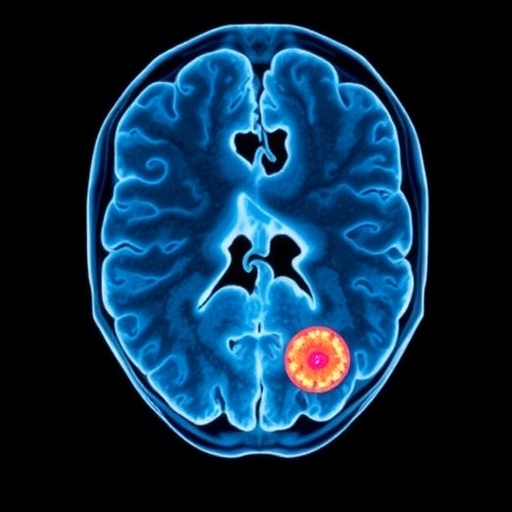In a groundbreaking study poised to significantly enhance our understanding of aging and frailty, researchers at the Gerald P. Murphy Cancer Foundation’s Center for Exceptional Longevity Studies have illuminated the profound influence of the hypothalamic–pituitary–gonadal (HPG) axis on late-life frailty and mortality risk in male dogs. This research, recently published in Scientific Reports, reveals that the duration of intact gonadal function—essentially the lifespan of testicular hormone production—plays a pivotal role in buffering the deleterious effects of frailty during advanced age.
The phenomenon of frailty represents a major challenge in geriatric health, encompassing a syndrome of decreased physiological reserves that predisposes individuals to adverse outcomes such as falls, protracted hospitalizations, and premature death. Traditionally, scientific efforts have concentrated on identifying the risk factors that contribute to the onset of frailty, aiming to develop preventative strategies. Yet, the novel investigation conducted by Dr. David J. Waters and his interdisciplinary team turns this paradigm on its head by focusing on resilience mechanisms that mitigate frailty’s harmful consequences once it manifests.
Utilizing a meticulously assembled cohort of geriatric male Rottweilers, known for their exceptional longevity and physiological parallels to centenarian humans, the study ventured beyond conventional methodologies. These dogs, who have lived approximately 30% longer than the average lifespan for their breed, serve as an unparalleled model system. Integrating lifetime medical histories sourced from veterinary records, structured owner interviews, and frailty scoring metrics, the research explored the intersection between the duration of endogenous testis exposure and late-life health outcomes.
The crux of the findings pivots on the integrity of the HPG axis—a core neuroendocrine system governing reproductive hormone homeostasis, particularly testosterone synthesis. Investigators established that male dogs with prolonged exposure to endogenous testicular hormones exhibited a remarkable attenuation in the mortality risk typically associated with escalating frailty. In stark contrast, those with shorter durations of testis function faced pronounced vulnerability and elevated mortality linked to frail phenotypes.
From a mechanistic viewpoint, this work suggests that maintaining the HPG axis’s functional integrity may sustain systemic anabolic signaling pathways crucial to muscle mass preservation, metabolic regulation, and immune competence—critical components in offsetting frailty’s physiological decline. Testosterone, in particular, orchestrates multiple cellular processes including protein synthesis enhancement, mitochondrial function optimization, and anti-inflammatory effects, collectively underpinning resilience in aged organisms.
Dr. Waters, who also holds a faculty position at Purdue University’s Center on Aging and the Life Course, emphasized that this research constitutes the inaugural empirical characterization of the complex interplay between lifelong gonadal hormone exposure and frailty-associated mortality risk. It invites a transformative reevaluation of how endocrine aging intersects with morbidity and mortality trajectories, potentially inspiring novel geroprotective interventions centered on hormonal regulation.
The study’s innovative integration of veterinary clinical sciences, sociology, nutritional science, and exercise physiology underscores the imperative of interdisciplinary approaches in gerontological research. Notably, co-author Markus H. Schafer, a sociologist with expertise in the psychosocial aspects of aging, contextualized these findings within a life course framework, acknowledging that early-life endocrine states can set the stage for differential aging outcomes by buffering late-life physiological stressors.
An extraordinary facet of this research lies in harnessing the oldest living dogs as sentinels and natural experiments in aging biology. Unlike laboratory strain animals, companion dogs share complex environments with humans, offering translational advantages due to comparable exposure to diverse lifestyle and environmental factors. This enhances the ecological validity and applicability of the insights gained to human aging.
The implications extend beyond veterinary medicine into human health, where the balance between gonadal hormone function and frailty could inform strategies to bolster health span and reduce morbidity. These findings challenge extant notions surrounding gonadectomy practices and their long-term consequences on organismal health, urging a nuanced appreciation of hormone preservation where feasible.
Historically, dogs have played a seminal role in endocrine research, facilitating landmark discoveries such as insulin and therapeutic androgen ablation in prostate cancer. This new chapter continues that legacy, leveraging canine models to decode the hormonal underpinnings of aging resilience. The study pioneers methodologies to quantify frailty and longitudinal mortality interplay with unprecedented resolution, setting the stage for future interventional trials.
Ultimately, this research aligns with burgeoning scientific efforts to identify modifiable factors that temper frailty’s impact, thereby enhancing quality of life for aging populations. With frailty’s increasing prevalence amidst global demographic shifts, such knowledge is invaluable. The Gerald P. Murphy Cancer Foundation’s work exemplifies how veterinary and human medicine can synergize to unlock universal principles of longevity and health maintenance.
In embracing the oldest living dogs as our collaborators and instructors, researchers invite a paradigm shift: to listen intently to the biological narratives embedded in these exceptional animals. Their natural histories provide a treasure trove of data that can unravel the intricacies of endocrine aging, illuminate frailty’s biological architecture, and eventually drive innovations that promote resilient aging across species.
Subject of Research: Animals
Article Title: Longer duration of intact hypothalamic–pituitary–gonadal (HPG) axis buffers the adverse impact of late-life frailty in male dogs
News Publication Date: 23-Oct-2025
Web References:
Scientific Reports Article
Gerald P. Murphy Cancer Foundation
Exceptional Aging in Rottweilers Study YouTube
References:
Waters DJ, et al. (2025). Longer duration of intact hypothalamic–pituitary–gonadal (HPG) axis buffers the adverse impact of late-life frailty in male dogs. Scientific Reports, DOI: 10.1038/s41598-025-20700-8
Linkage between ovaries and longevity
Endocrine disruption and ligament rupture risk
Recent frailty research
Image Credits: CENTER FOR EXCEPTIONAL LONGEVITY STUDIES, GERALD P. MURPHY CANCER FOUNDATION
Keywords: frailty, aging, HPG axis, gonadal function, testosterone, mortality risk, Rottweilers, longevity, veterinary medicine, endocrine aging, gerontology, resilience
Tags: aging and frailty in dogscanine gerontology researchfrailty syndrome in elderly petsgeriatric health in caninesgonadal function and longevityhypothalamic-pituitary-gonadal axisimplications for human aging studiesmale dogs and hormone productionmortality risk factors in aging dogsresilience mechanisms in agingRottweilers and longevity studiestesticular hormone influence on health





